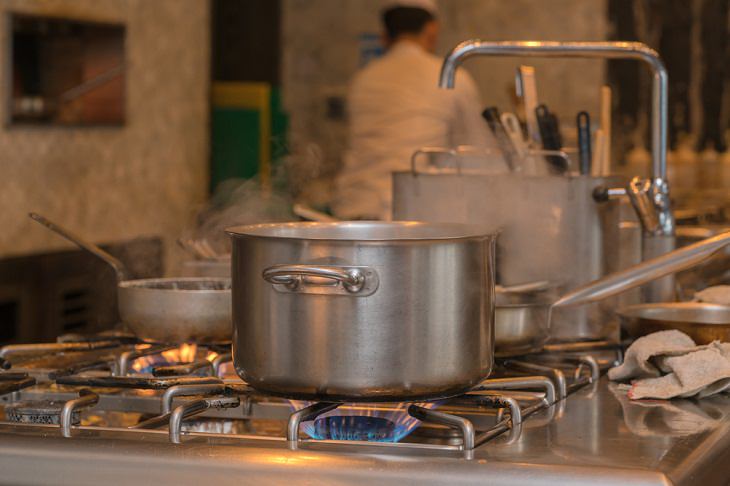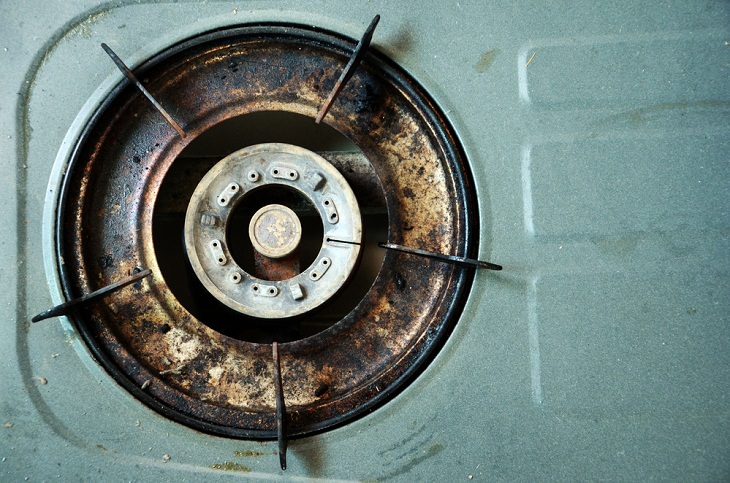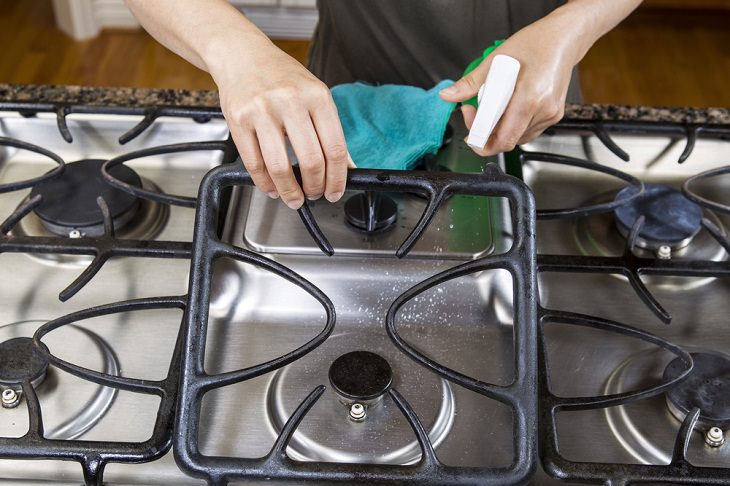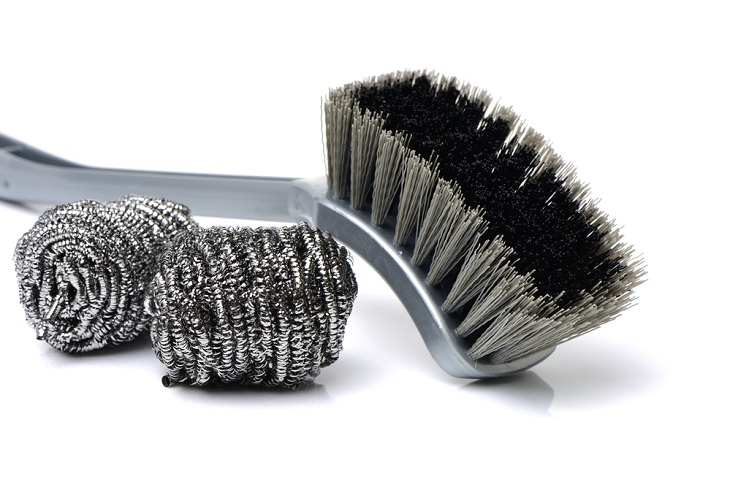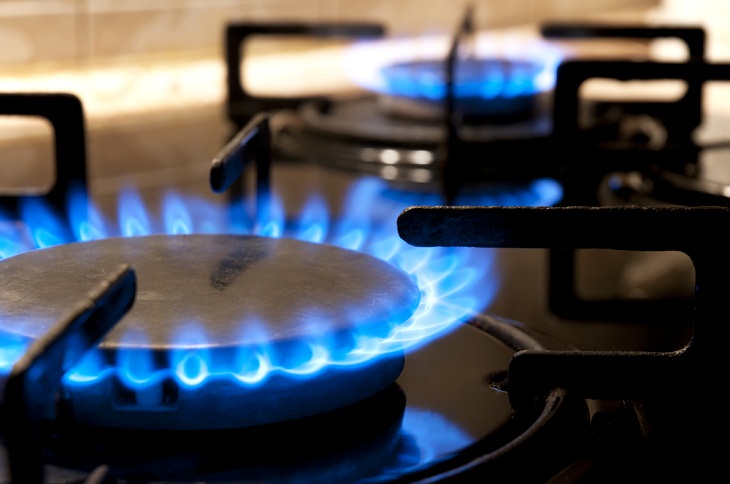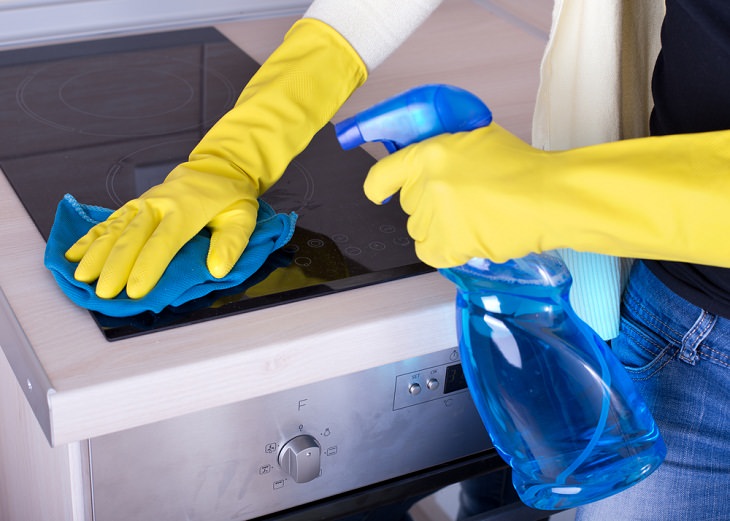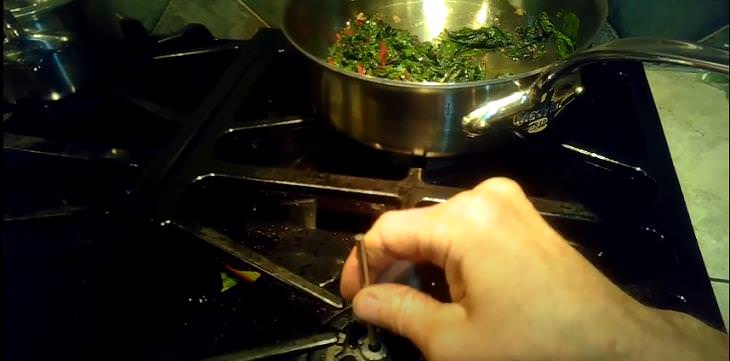This is a common mistake that we all tend to make. While boiling water or letting something simmer or stew, we leave the kitchen. We think we have a couple of minutes at hand and decide to take a short break. But think back and remember how many times being careless resulted in boil-over or splashes on your stovetop. It can be extremely annoying.
These little accidents are pretty frequent and lead to debris or spills that can be really difficult to clean later on. If ignored, these little spots can eventually damage your stovetop. Thus, it would be better to keep your eyes on the stovetop at all times whilst you are cooking and ensure that you clean up any spills immediately.
2. Forgetting to clean a clogged up burner
Clogged burners are a common issue that is often ignored. A clogged gas stove burner can result in uneven heat or no heat at all. The point is, merely scrubbing spills off the grate won’t be enough. A gas burner is made up of dozens of little holes or nozzles that can slowly fill with food particles and old grease and if not cleaned regularly they may function irregularly. If the clogs are never cleaned, the opening from where the gas comes out is likely to shorten as well. Over time, a clogged gas burner can corrode and eventually harm the life of your stovetop.
Therefore, it is vital that you clean your gas burner from time to time to ensure its longevity and keep your stovetop safe. The best way to clean your stove’s burners is to first soak their heads and caps in soap and warm water for 30 minutes. Then scrub them gently with a non-abrasive scrub pad or an old toothbrush. A clogged burner’s openings should be carefully cleaned with a paper clip.
3. Using too much water while cleaning
While you need some water to clean your gas stove, you shouldn’t go overboard with it either. Both gas and electric stovetops can short out when too much water is used to clean them. We often forget that underneath the burners, a gas cooktop has control boards, electric switches, and even wires. Using too much water on it is hence not a very smart idea.
In fact, you should avoid putting water or other liquids directly on your stovetop. The better and safer alternative is using a wet scrubbing pad that you can use to wipe your stove every day and get rid of all the grime.
4. Cleaning with products that may harm your stovetop
Are you cleaning the surface of your gas stove with a wire brush? Or steel wool? While you may have been told that these products will help remove the tough, dried-on grime from your stovetop thoroughly, they are likely to damage the appliance in the long run. Abrasive products like wire brushes can ruin the electrodes on your stove. Steel wool, meanwhile, can leave deep pits on your stovetop’s surface. Over time, these small pits will be filled with little food particles that will be difficult to remove.
You would be better off using cleaning products specifically designed for cleaning stovetops like a scrubbing pad. Or you can simply use a sponge and warm, soapy water for the job. You can also use a plastic spatula or plastic knife to scrape away the dried grime off of the stovetop.
5. Ignoring the signs of a gas leak
Gas leaks aren't just harmful to your stovetop, they are also highly dangerous as they can lead to a gas explosion. Hence, you shouldn’t ignore any noticeable signs of a stove gas leak. For instance, if the smell of the gas appears before you even turn your stove on and it begins to spread across your home, then it might be a sign of a clear hazard. Other signs include a yellow or orange flame (a strong gas flame is blue while warm colors may indicate a slow leak) when cooking on the stove or a hissing sound near your gas lines or appliances. Even black soot marks on the outside of your stove might be a cause for concern.
If you notice any of these signs, just open your windows and call a professional to get your stovetop checked immediately. If the smell of the gas is too strong, it would be better for you to step outside your home and wait for the professionals to arrive.
6. Using a glass cleaner on a glass stovetop
For cleaning glass stovetops, ammonia-based cleaners should be avoided. While this may sound odd, experts say that the ammonia in these glass cleaners is too strong for cleaning a glass stovetop and can streak or stain its surface. While ammonia-based cleaners are good enough to remove fingerprints and light dirt, they are not ideal for getting rid of food remnants that are stuck on the surface either. White vinegar would be a much better alternative for cleaning your glass stovetop.
7. Trying to repair the appliance yourself
Unless you know your stovetop inside out or have prior experience in repairing it, you should leave the job of fixing any issues with the professionals. Many a time people try and fix a problem with the appliance themselves, thinking it’s a little issue that can be easily resolved. However, in doing so, they end up taking the stovetop apart and not figuring out how to put everything back together. Moreover, this can cause unnecessary additional damage that wasn’t even there in the first place. Hence, it’s always better to seek the help of a professional to repair your stovetop if you are not sure about the issue yourself.
Found this article useful? Please share it with others, too...

